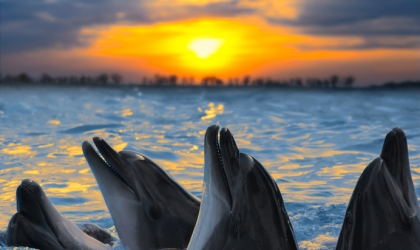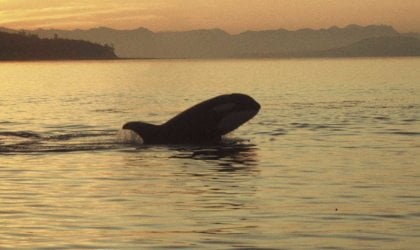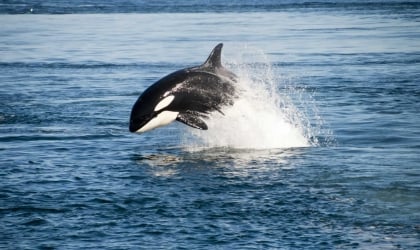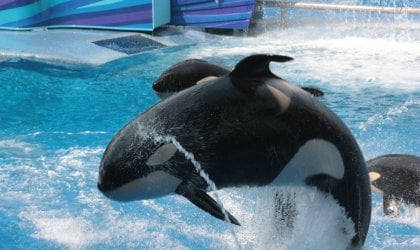See eight reasons why orcas don’t belong at SeaWorld, and discover what you can do to help them!
1. Premature Deaths
In nature, male orcas can live to be 60 to 70 years old and females can live to be 80 to 90. By contrast, the average age of death for orcas at SeaWorld is just 14 years old.

2. Unnatural Behavior Toward Humans
In nature, despite centuries of sharing the ocean with us, there has been only a single reliable report of an orca harming a human. Because of the stress involved in being deprived of everything that’s natural and important to orcas in extreme captivity, they have attacked and killed four humans since just 1991, and many other people have been injured by them.

3. Collapsed Dorsal Fins
All captive adult male orcas have collapsed dorsal fins, likely because they have no space in which to swim freely, spend long periods of time floating listlessly at the surface of the water, and are fed an unnatural diet of thawed dead fish. SeaWorld claims that this condition is natural—however, in nature, it rarely ever happens and is a sign of an injured or unhealthy orca.
4. Tanks
SeaWorld confines orcas, who could swim up to 150 miles a day in the ocean, to tanks that, to them, are the size of a bathtub. They would have to do more than 4,280 laps in a tank to swim the same distance they would in nature.
5. Fights
Incompatible orcas are forced to live in tight quarters. The resulting anxiety and tension often lead to fights. In nature, orcas have strong social bonds that may last for life, their social rules prohibit serious violence against each other, and when fights do occur, the animals can find space to flee. In marine parks, however, there’s nowhere for them to go, which leads to injuries and death.
Nakai was injured in an altercation with two other orcas in 2012, causing him to lose a large chunk of his jaw.
6. Diet of Pig and Cow Bones
In tiny tanks, orcas are unable to hunt and obtain water from their prey, so SeaWorld gives them gelatin, a substance that’s not natural for them, in an attempt to keep them hydrated. Tilikum, who weighed 6 tons, consumed 83 pounds of gelatin every day.
 © Jo-Anne MacArthur/We Animals Media
© Jo-Anne MacArthur/We Animals Media
7. Breaking Their Teeth
Orcas at SeaWorld gnaw on metal bars and the concrete sides of their tanks out of stress, anxiety, and frustration, sometimes breaking their teeth and resulting in painful dental drilling without anesthesia.
8. Family Matters
Orcas are highly social animals who live in stable social groups ranging from two to 15 individuals. In some populations, children stay with their mothers for life. At SeaWorld, orcas are forced to live with members of other family units.
Orcas belong in the ocean, NOT at #SeaWorld. pic.twitter.com/hOjUGB4H1d
— PETA (@peta) May 1, 2017
Orcas suffer mentally and physically just to line SeaWorld’s pockets. You can help them! The momentum has been on our side since the release of Blackfish in 2013 and SeaWorld’s subsequent decision to end its orca-breeding program in 2016. Please join the fight to help orcas and tell all your friends never to support the company’s abusement parks.




